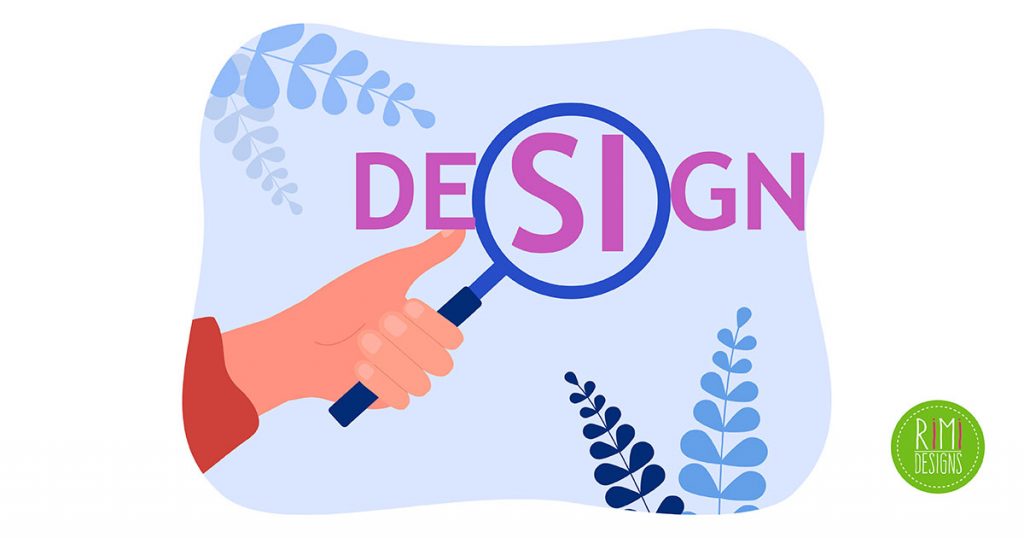
The Importance of Design Research
Prior to embarking on any design project, whether the end product is a website, a graphic or visual artwork, a lifestyle item or gadget, the most important and first step any designer should take is to do ample design research.
Doing the research is relatively simple. However, it’s the task of trying to understand and apply the research to benefit your project that is not easy. There are numerous methods to go about doing design research. Regardless of the method used to gather the research needed, it is a process that cannot and should not be avoided.
This article will explore the steps you can take to develop a good research habit prior to the start of any design project.
Dissecting the design brief
Before you can arrive at a destination, you need to know how to get there and what it takes to reach it. If the destination is a design project, the design brief is the manual or roadmap to show you what is required to get there.
Understanding the brief
Translate the brief into manageable sizes so that you can better understand what it expects. A design brief commonly states the aims, objectives and milestones of the project. Understanding the brief is a very important part of any design process.Clarify the brief
Always read the design brief thoroughly. Clarify any questions you might have before you begin any project, so that you can fully understand what is expected.
Identify and take note of the objectives and aims of the project stated in the brief. This will help you to stay on track right from the beginning of the project and ensure that you achieve what the client wants.
The deliverables and deadline of the project is the most important thing you should take note of in a design brief.
Use coloured markers or highlighters to mark out these information. It will help you easily pinpoint the essentials when you refer back to the brief at a later stage.Half the battle is won
Once you’ve fully understood the brief, the fun begins. Doing the research for the project may be time consuming and tedious, but it’s definitely more fun than you think.
Researching for your project will bring to your attention interesting information and trivia that may surprise you and fascinate you.
Know your client
The most obvious place to obtain information is to read about the company on their website. If they do not have a website, try searching for journal articles online or go to your nearest library.
Speaking to a branding personnel from the company is also one way to gather as much information as possible. This will help you to better understand the core values of the company.
Find out what are the main goods the company sells and the services they offer. This will play a part in helping you understand their target audience which will, in turn, help you develop a better end product.
It is not enough just to get to know the company you are working for. In order for you to know what you are up against, you need to research the company’s competitors or companies that offer the same or similar good and services. When you compare the company against others, you will be able to determine its current position in the market and what needs to be done to surpass or at the very least be on par with its competitors.
Providing a questionnaire
If you’re stumped or stuck and don’t know how to go about doing your research, fret not! You can’t go wrong with the famous “Five Ws and one H” – Who, What When, Where, Why and How. These interrogative words will help start the ball rolling and is a simple technique that can help you quickly get to the root of the design problem.However, bear in mind that if the “Five Ws and one H” doesn’t prompt an intuitive answer, other problem-solving techniques may need to be applied.
Try these questions
Still not sure what questions to ask? These are some examples of the questions you can ask when applying the “Five Ws and one H”:1. Who is this application for? Who might benefit from it?
2. What do they sell (if any)? What is their current website missing? What are the advantages and disadvantages?
3. Where can it be applied?
4. Why is this application introduced? Why is it necessary?
5. When should it start or stop? When is this idea applicable?
6. How will this website sell the products? How are users likely to react?
Embrace your users
The research area that is considerably the most important one you need to be aware of is your target audience. Despite the fact that most websites reach out to a general audience, some websites target only a specific audience, like those for the colourblind, seniors and children.
Break down your users into:
- Primary users
- Secondary users
Personas
Persona, also known as “user profile”, is defined as fictional characters created to represent the different user types within a targeted demographic, attitude and/or behaviour set that might use a site, brand or product in a similar way.Defining personas is an important part of the research process because the behaviour of different individuals may indicate a specific problem they are facing and your application can help resolve that.
Be as comprehensive as you can when drafting out your persona. You may organise it into the following for analysis:
- age
- gender
- ethnicity
- location
- hobbies and interests
- education
- social/economic status
- spending power
- religion
- media usage/computer literacy – this determines the intuitive level of the website.
Connect with your users (“Is-Does-Mean” method)
The target audience of your product is your yardstick. Actual interaction with the target audience will greatly help you with your research. Create surveys that they can participate in. You want to know about their experiences, both good and bad.
The ideal, social and emotional experience of the user is important because they are the ones you are attempting to reach out to and to help better their quality of life and experience. You cannot connect with them if you do not know what help they need or want.
Remember that your target audience are your ultimate judges. They will be the ones to determine if you have done a satisfactory job and whether you have engaged them and given them an outstanding experience.
Keep this in mind when you create the questionnaire and try using the “Is-Does-Mean” method to help you with the questions.
1. What is the product about?
2. What does it do?
3. What does it mean to you (the user)? Or what does it mean to you when others see you using it?
Using the “Is-Does-Mean” method gives your users an idealistic status, which they empower when they use the product. This results in a powerful psychological effect on the user, especially in today’s rapidly increasing acquisitive nature of consumers.
Mind map your way to creativity
By this stage, you should be relatively well-informed with sufficient background information regarding the project and its parameters.
Now it’s time to analyse all the data you’ve collected and start brainstorming ideas and integrating the information and ideas together.
An effective brainstorming method is by mind mapping. Scribble as many words as possible and circle the keywords. Collect images, magazine cut-outs, image search through stock photography and attach them to the words on your mind map to assist you visually during this conceptual stage.
Creativity can hit you anywhere and at anytime. Keep a sketchbook handy so that you can jot ideas down the moment it comes to you. If an object or product sparks your interest and inspires you, quickly snap a picture of it or find an image of it to keep in your handy sketchbook.
The use of moodboards
Various fields make use of a moodboard, as a point of reference, for the visual or overall style for a project. A graphic designer’s moodboard may consist of pictures, fonts, 2D or 3D graphics and various layouts put together after much thought and consideration regarding the project. The purpose of a moodboard is to help communicate the design intent, as well as the emotional and contextual aspects to clients.
Why use moodboards?
A picture paints a thousand words. Rather than spending hours trying to describe the look and feel of your ideas, make use of a moodboard to get your ideas and messages across.
Show, don’t just tell. With a moodboard to help you in your presentation, it will be easier to communicate the overall look and feel of the end product. The moodboard doesn’t just help you communicate your visual ideas to your clients, it also helps as a future reference and guideline to keep you on track. It will help avoid the possibility of you digressing from the initial visual style and concept of the project.
Bridging the gap – product to consumer
Design research can range from just the tip of the iceberg to an extensive and comprehensive one. It all depends on the scale of the project and the expectations and parameters of it.
No matter the magnitude of the project, one should not be ignorant to the importance of doing your design research beforehand. It is a crucial part of the design process that cannot be bypassed as it will ultimately be reflected in your design and your work ethics.
SOURCE: Onextrapixel
Ready to bring your vision to life? Don’t settle for ordinary, let’s design the extraordinary together! Unleash the power of your ideas with stunning visuals. Your masterpiece is just a click away. Think we’d be a great fit? Work with me and let my expert graphic design skills transform your concepts into captivating designs. Let’s talk!



